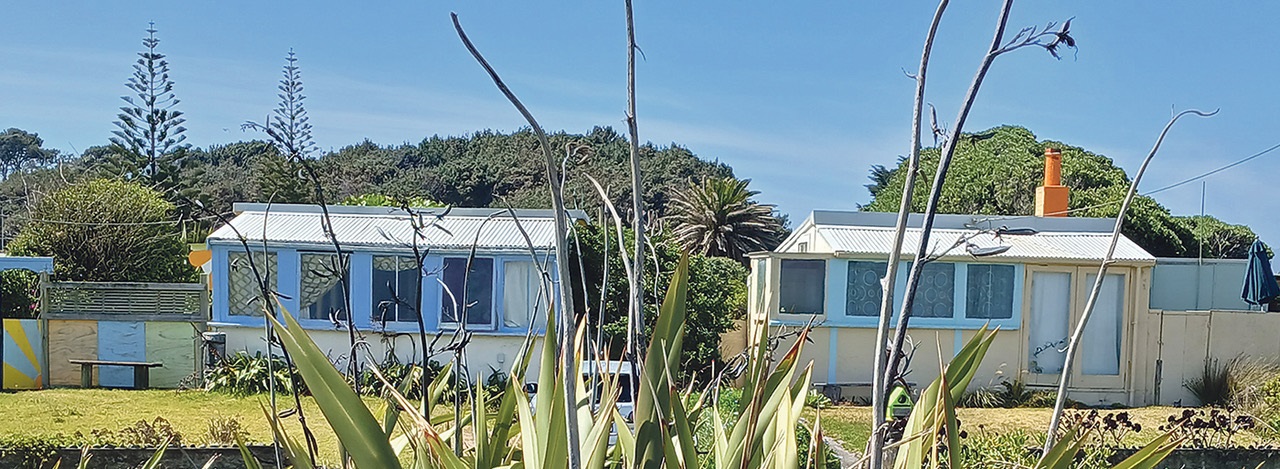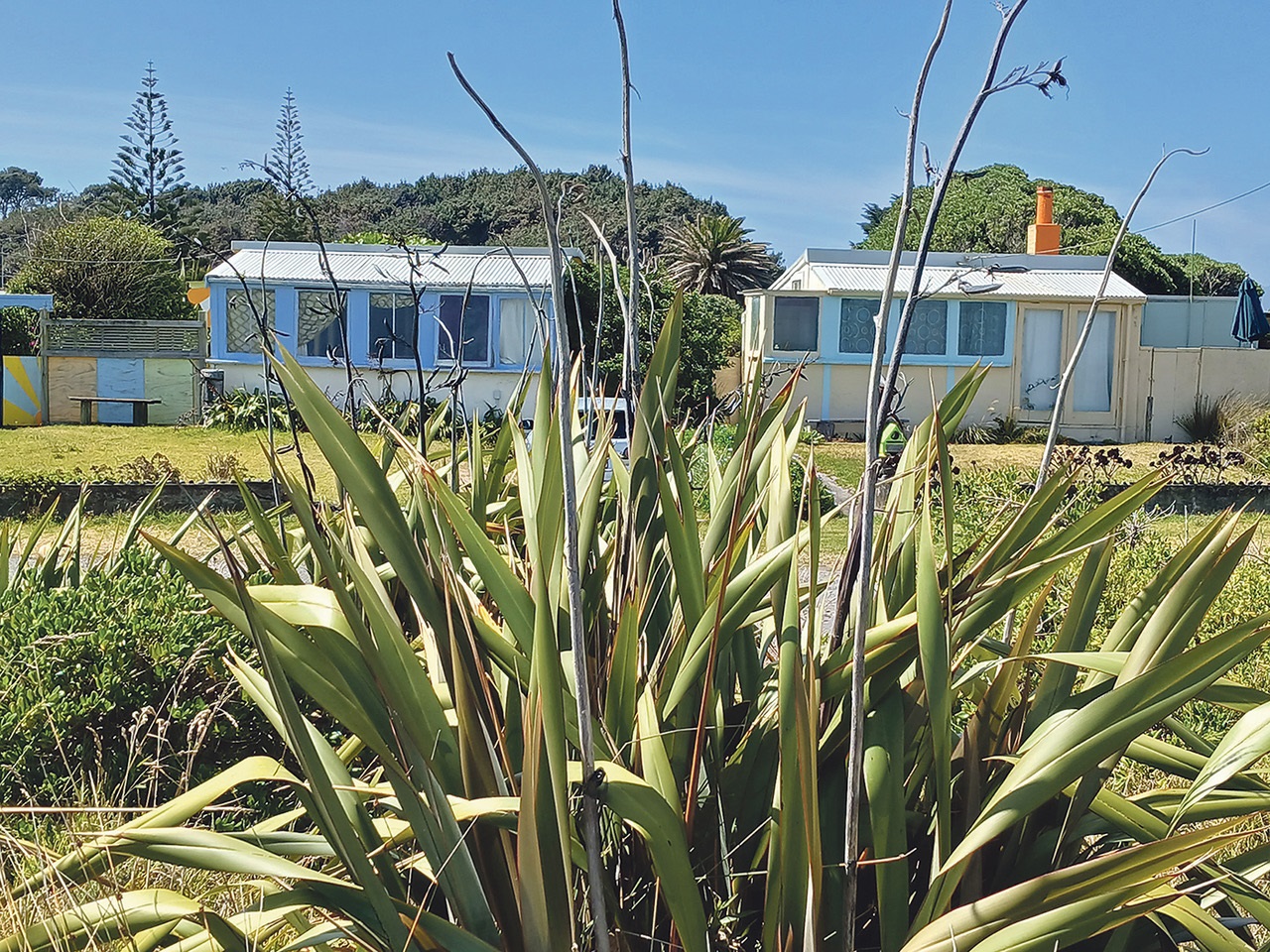
In the early 1800s Ōtaki Beach was one of the places of rest and recreation for the whalers who returned to the mainland from Kāpiti Island in the off season.
Some of these men married into the local iwi and were then able to build huts on what was their wives’ land. Others were housed in rudimentary dwellings only with the blessings of the local mana whenua of the time.
Whaling began in the early 1820s, with the boom period in the 1830s, continuing until about 1850 when stocks became depleted. By this stage, some of the most well known descendants of Ōtaki had settled here and took up pastoral farming and other land-based occupations instead.
The arrival of Te Rauparaha in 1822 and his subsequent land occupations meant that, unless the whalers had married into land-owning families, the purchase of other land was difficult. Much of that used for farming was leased, rather than bought.
After his death and with the creation of the Māori Land Court, much of the land around the southern end of Marine Parade and what is still known legally as the Taumanuka Block was sold, mainly to lawyers working for the court. Many of the original whaling families remained living in the area, although the ownership of much of the land was no longer in Māori hands.
Some of the new titles created through the subdivision of the land were used as the earliest beach accommodation in the area. Robert Jones Staveley, himself a lawyer with the Māori Land Court, built cottages on land he and his family owned on the corner of Marine Parade and Rangiuru Road. The titles and boundaries within the wider area were often chopped and changed to suit the new owners’ needs, resulting in the patchwork of properties today.

The two remaining small cottages built by Robert on Marine Parade, known by locals as the Fishermen’s Cottages (pictured), are believed to have originally been built to accommodate holiday makers to the area. Later owners of the cottages also occasionally rented these out. The cottages remain today, and are still rented, though a recent change in ownership might see their eventual demolition to allow a larger building to be built across both sites, which are under one title.
Another later dwelling, built next door on the land of Robert’s daughter, is still in use five generations later. A remnant of one whaler cottage remains – now part of a bungalow on a small property on Rangiuru Road, subdivided from the Taumanuka Block in the original land sales.
This example of change in dwelling types along the beachfront comes at a time when the nature of housing use along Marine Parade has already morphed from fishing shacks and simple baches to either upgraded permanent residences for those fleeing Wellington’s rapid rise in real estate costs or for the generation of wealth through the likes of Airbnb and Bookabach.
The completion of the Peka Peka to Ōtaki expressway and Transmission Gully mean these options are more attractive to either residents or holiday makers.
The concept of enticing well-heeled out-of-towners to Ōtaki Beach isn’t new. Some of the first constructions after the acquisition of land were for accommodation. Large multi-roomed buildings were erected for those travelling on the coach roads to the town or further north. Few, if any of these buildings remain, mainly due to destruction by fire. Edmund Tudor Atkinson (Tudor) built one in the Rangiuru area that was later reduced to ashes.
But Tudor had other, bigger ideas. He proposed a development entitled “Rangiuru-by-the Sea” that involved the subdivision of a large tract of land he owned that he envisaged as providing holiday housing for “wealthy Wellingtonians”, as it says on the marketing material.
An advertisement in The Evening Post on the April 11, 1895, enthuses: “No marine township in the colony has excited more interest in its inception than Rangiuru-by-the-Sea. Situated within 50 miles of the City of Wellington, its accessibility is a first feature, and the climate, freedom from strong winds, the expanse of its beach, and the facilities offered for enjoyment in its surroundings render Rangiuru-by-the-Sea wonderfully attractive alike for invalids and holiday-seekers.”[1] To cover all bases, the land was also available for grazing leases.
Sadly for him, Tudor’s dream was not realised. A plan of the subdivision and further information about it can be seen at the exhibition “Te Whakaaturanga o Te Tahamoana o Ōtaki – Ōtaki Beach Exhibition” at the Ōtaki Museum in Main Street.
The demise of the well-known camping grounds, now sold and subdivided, has meant further difficulties for those not wanting to spend what they can’t afford; the pleasures of holidaying at Ōtaki Beach so enticingly depicted by Tudor are no longer available to them. And, unless they own a fully self-contained motor home, “freedom camping” at the river mouth is also out of reach.
However, “wealthy Wellingtonians” (or reasonably well-off people from anywhere) do not need to despair. At a quick glance, there are more than 35 Airbnb properties available in the Ōtaki Beach area and more than 20 on Bookabach. It should be noted, however, that some of the property owners have maximised their chances of attracting would-be renters by listing on both sites.
So, while there is plenty of choice in holiday accommodation in Ōtaki Beach, the chances that the accommodation will be an original whaler’s or fisherman’s cottage, or a cheap campsite, are unlikely. Most of the current listings are newly renovated or newly built houses, apartments, tiny homes and the odd spare room in a house way tidier than most.
And, if you’re not so well-heeled and are simply looking for affordable rental accommodation close to your children’s school or your whānau, in the town you grew up in, good luck. You’re going to need it, even if you are descended from one of Ōtaki’s founding families.

Nicky Treadwell
OTHER POSTS

LATEST POSTS
- How out-of-work men cleared Hautere
- Medals to remember Maggie, Harry
- History milling around
- Historic Te Horo kaīnga restored
- Work on old Clifden Cottage under way
- Medals tell a story spanning the world
- Claimants lament loss of Rangiuru Pā
- Medal for Roy after nuclear test service
- Hector, 100, at Sunset Retreat
- From whaler cottages to Airbnbs
- Vault opens door to local history
- D-Day remembered at college commemoration
- Oddities beneath the floorboards
- Tales of a winning cricket team
- History in a humble tomato box
- Uncovered swagger stick tells sad tale
- Restored theatre pianola returns
- Restoration the focus for rotunda Friends
- Convoy PQ17 remembered at college commemoration
- The manager’s daughter – memories of the old Civic Theatre
- Ōtaki sergeant gets bravery award – 70 years later
- Costs, dwindling attendance likely to close old Manakau church
- Everiss a Kiwi hero for Scottish village
- The influence of volcanic eruptions
- The gardener who braved the Arctic

